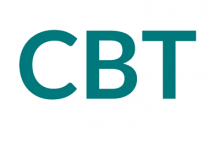
Member Prices
In his efforts to provide empirical evidence for psychoanalysis in the 1950s, Aaron Beck, MD, was instead led to search for alternative explanations for depression. He discovered that distorted, negative thoughts are a primary feature of depression. This resulted in the development of cognitive therapy, which is a structured, short-term, present-oriented process. He later added a behavioral component after finding that people with depression also needed to have behavioral activation as a core component of treatment. As empirical evidence mounted, these same techniques were transferred to treating anxiety and other disorders. Cognitive-behavior therapy (CBT) has been demonstrated to be equal to and sometimes more effective than medication alone (J Clin Psychiatry 2004; 65(suppl 5). CBT is also proven effective with clients of diverse levels of education and income, as well as a variety of cultures and ages. CBT can be used in multiple treatment settings, including outpatient, inpatient, schools, and correctional facilities.
Because of its effectiveness, CBT is the treatment of choice for anxiety disorders, obsessive-compulsive disorder, and depression not only because it reduces suffering but because it teaches skills that will help people stay well. Many therapists learn the basics of CBT in graduate school, but they desire more guidance in using these skills with challenging clients.
Part I and Part II of this workshop offer a chance to learn important foundational skills that will allow you to take full advantage of the more advanced webinars and workshops available from ADAA online and at the conference. You do not need to attend both Part I and Part II. Join us in this interactive and fun workshop to learn the basics of CBT and how to successfully use this approach in your practice.
At the end of this session, participants will be able to,
- Articulate the principles of cognitive-behavior therapy
- Socialize a client to the cognitive behavior model
- Structure and format sessions
- Connect thoughts and feelings
- Implement Socratic questioning
- Formulate behavioral activation with clients
- Identify and evaluate automatic thoughts














